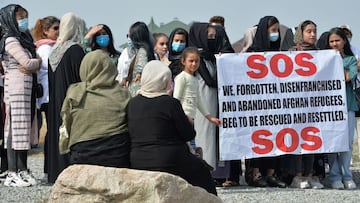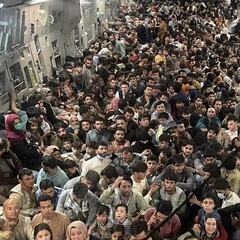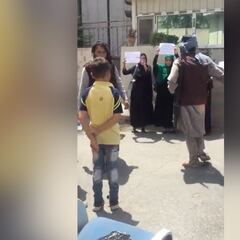What is the SIV program for Afghans?
The US has expanded its resettlement scheme for Afghans who collaborated with them against the Taliban but critics say the expansion is not enough.


The State Department has updated their website to show information regarding Special Immigration Visas (SIV) for Afghans who were employed by the US government. Enacted on July 30, the scheme authorized an extra 8,000 visas for Afghans escaping the Taliban. The plan was enacted before the full extent of Taliban power was shown and there are calls for the program to be expanded to help the desperate Afghans in Kabul. President Biden has set aside $500 million for the scheme.
The UNHCR estimates that more than 400,000 Afghans have fled their homes this year alone.
This morning, the President and Vice President met with their national security team and senior officials to hear updates on the draw down of our civilian personnel in Afghanistan, evacuations of SIV applicants and other Afghan allies, and the ongoing security situation in Kabul. pic.twitter.com/U7IpK3Hyj8
— The White House (@WhiteHouse) August 15, 2021
Why are the SIVs necessary?
SIVs are not new. They were first allocated in 2014 and the extra 8,000 means that 34,500 visas have been allocated to Afghan workers in total. The extra 8,000 was a reaction to the further withdrawal of American troops agreed in 2020. The scheme was created with the belief that a new civil war in the country could endanger the lives of the Afghan collaborators, but the speed of the Taliban conquest seemingly took the US by surprise. Now thousands are attempting to get to safety in NATO planes and it is proving difficult to process all the claims.
Related news:
- Afghan women take to streets of Kabul in defiance of Taliban
- Afghans cling to side of plane as it prepares to take off in Kabul
- What did President Biden say about the US leaving Afghanistan and the Taliban taking Kabul?
- How much did the US spend in Afghanistan?
- The Taliban in Afghanistan: why do they want power and what are their rules?
Is this anywhere near enough?
It used to take two-years to be fully vetted for the scheme, but the sudden Taliban advance has put the scheme under immense pressure. Axios has been speaking to people in Kabul who are involved in the process and have discovered important information regarding the evacuation.
It is claimed that covid-19 protocols stopped the processing of applications for 10 months, only resuming in January. This was the result of every meeting needing to be face-to-face with diplomats. There was also no process that had been organized for actually getting Afghans out after the withdrawal was announced and it had to be started from scratch. By May 2021 the time to process had been reduced to a year, but the September 11 deadline for Biden still made it impossible to get everyone out.
The first week of august saw 831 applications be processed. It will take considerable time to process them all, and it is still unsure if the Taliban will leave the airport alone.
Gov. McMaster was asked whether he welcomes Afghan SIV holders to resettle in South Carolina. “Those people…helped protect Americans. Now they are in severe danger. It is our duty to help them.” @WCBD https://t.co/sOH8iJQnGk pic.twitter.com/Xlr4y5T1qm
— Chase Laudenslager (@News2Chase) August 19, 2021
Where are refugees going?
Related stories
The United Kingdom announced they will accept 20,000 refugees, as will Canada. The UK said their scheme will be aimed at "the most vulnerable," namely women and children. The British parliament was recalled from its summer recess early to debate the UK's role in the collapse of the country and what it can do next. Other countries in Europe are saying they will take refugees, such as Germany and the Netherlands.
As well as these plans, a more pressing problem could be the influx of Afghanistan's direct neighbors. Iran already hosts 3 million Afghans, as that number is expected to jump as people flee through the long and porous border. Pakistan has 1.4 million Afghan refugees, with the UN estimating the number could be as many as 3 million, making it one of the largest refugee populations in the world. While the west deliberates, those countries closest to Afghanistan will have their support stretched the most.

